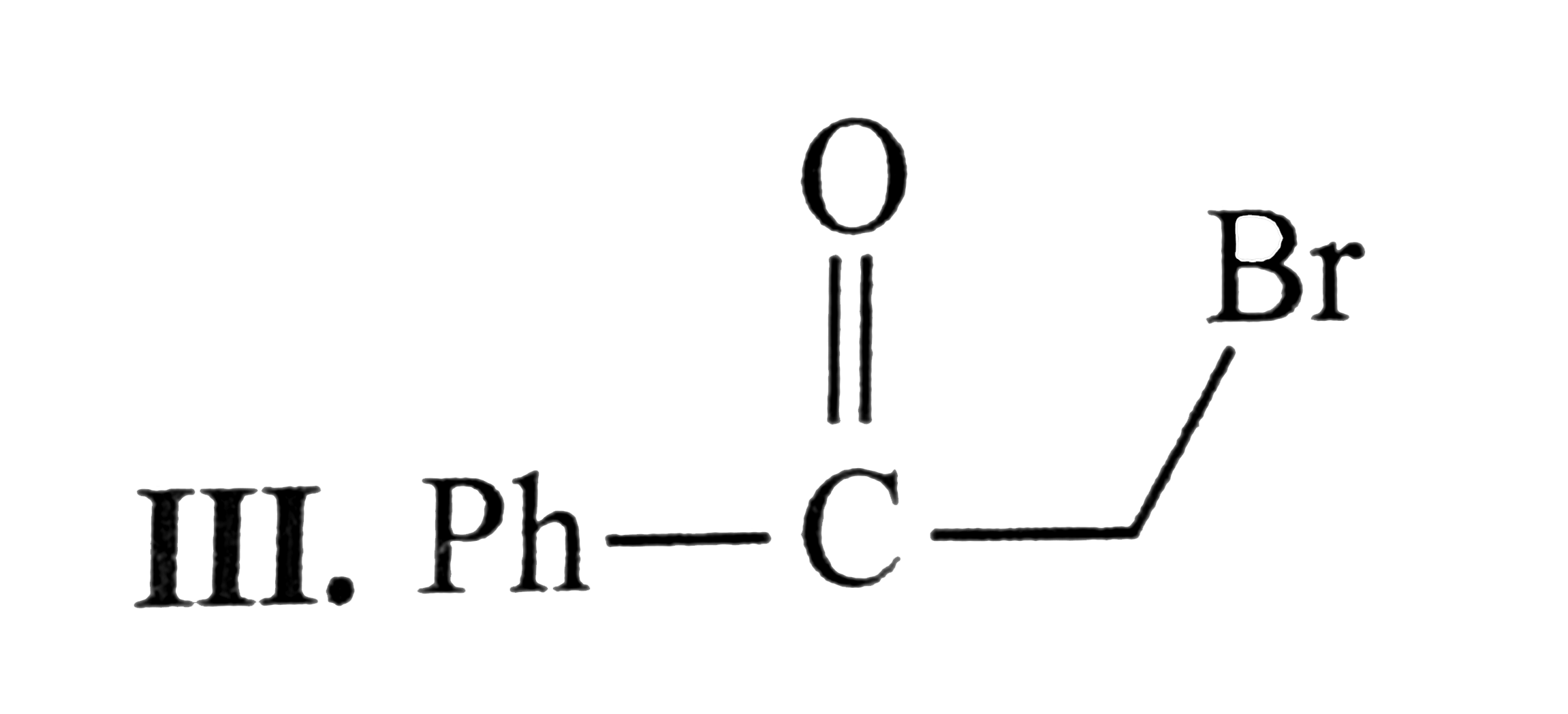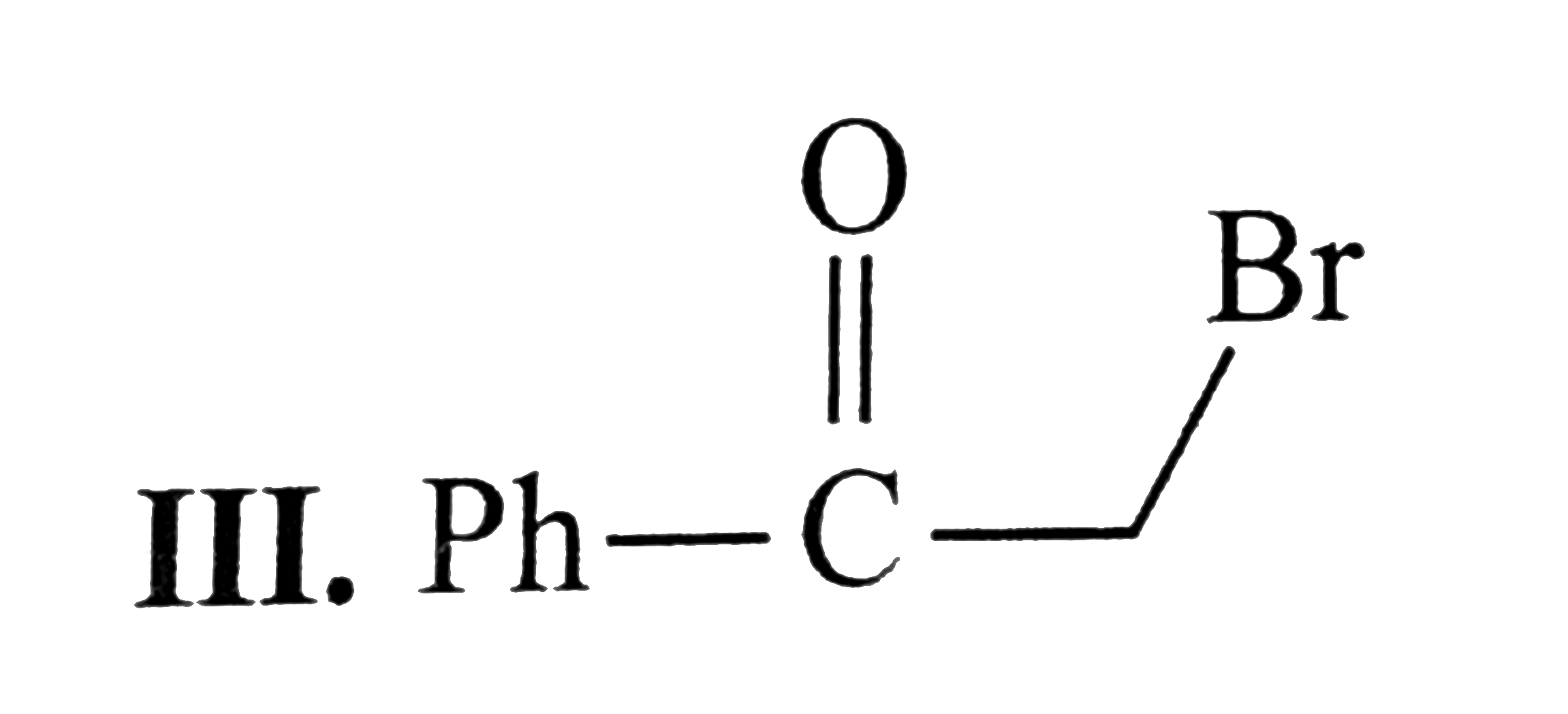SN2 reaction is a bimolecular reaction which takes places by the formation of T.S. Veolcity of the reaction depends on the concentration of the substrate as well as the nucleophile.
The reaction is favoureed by strong Nuo− and in the presence of polar aprotic sovlent, optically active halides give. Walden inversion by SN2 mechanism. The presence of hetro group (atom) at β−C atom, unsaturation at β−C and ⎛⎜
⎜⎝−O∣∣C−⎞⎟
⎟⎠ group at α−C atomn favor SN2 mechanism.
Allyl halides and benzyl halides give SN1 and SN2 reactions. Allyl halides alos give SN2 mechanism EDG at ortho- and para- postions in benzyl halides favors SN1 mechanism, wheras EWG favors SN2 mechanism.
Which of the following will gives SN2 mechanism gt
EtBr


All
The correct Answer is:d
To determine which of the given compounds will undergo an SN2 mechanism, we need to analyze the characteristics of each compound based on the principles of SN2 reactions. Here’s a step-by-step solution:
Step 1: Understand the SN2 Mechanism
SN2 (Substitution Nucleophilic Bimolecular) reactions are characterized by:
- A bimolecular reaction where the rate depends on the concentration of both the substrate (alkyl halide) and the nucleophile.
- Favorable conditions include strong nucleophiles and polar aprotic solvents.
- The reaction involves a backside attack leading to Walden inversion, where the configuration of the substrate is inverted.
Step 2: Identify the Type of Alkyl Halide
The type of alkyl halide plays a crucial role in determining whether an SN2 reaction will occur:
- Primary (1°) alkyl halides are most favorable for SN2 due to lower steric hindrance.
- Secondary (2°) alkyl halides can undergo SN2 but are less favorable compared to primary.
- Tertiary (3°) alkyl halides are generally not suitable for SN2 due to high steric hindrance; they favor SN1 reactions instead.
Step 3: Analyze Each Compound
Assuming we have four compounds to analyze (let's denote them as A, B, C, and D):
1. Compound A (C2H5Br): This is a primary alkyl halide (1°) since the bromine is attached to a carbon that is connected to only one other carbon. Thus, it can undergo an SN2 reaction.
2. Compound B: If this compound is also a primary alkyl halide (similar to Compound A), it will also undergo an SN2 reaction.
3. Compound C: If this compound is identical to Compound B, it is also a primary alkyl halide and will undergo an SN2 reaction.
4. Compound D: If this compound is a secondary or tertiary alkyl halide, it will be less favorable for SN2. If it is primary, it will also undergo SN2.
Step 4: Conclusion
Based on the analysis, if all compounds A, B, and C are primary alkyl halides, they will all undergo SN2 reactions. The answer to the question is that all the compounds that are primary alkyl halides will give an SN2 mechanism.
Final Answer
All the compounds (if they are primary alkyl halides) will give SN2 reactions.
---
SN2 (Substitution Nucleophilic Bimolecular) reactions are characterized by:
- A bimolecular reaction where the rate depends on the concentration of both the substrate (alkyl halide) and the nucleophile.
- Favorable conditions include strong nucleophiles and polar aprotic solvents.
- The reaction involves a backside attack leading to Walden inversion, where the configuration of the substrate is inverted.
The type of alkyl halide plays a crucial role in determining whether an SN2 reaction will occur:
- Primary (1°) alkyl halides are most favorable for SN2 due to lower steric hindrance.
- Secondary (2°) alkyl halides can undergo SN2 but are less favorable compared to primary.
- Tertiary (3°) alkyl halides are generally not suitable for SN2 due to high steric hindrance; they favor SN1 reactions instead.
Assuming we have four compounds to analyze (let's denote them as A, B, C, and D):
Based on the analysis, if all compounds A, B, and C are primary alkyl halides, they will all undergo SN2 reactions. The answer to the question is that all the compounds that are primary alkyl halides will give an SN2 mechanism.
All the compounds (if they are primary alkyl halides) will give SN2 reactions.
Topper's Solved these Questions
- AROMATIC COMPOUNDS AND ALKYL AND ARYL HALIDES BOOK - CENGAGE CHEMISTRY ENGLISHCHAPTER - AROMATIC COMPOUNDS AND ALKYL AND ARYL HALIDES EXERCISE - Exercises Linked Compreshension Type
11 Videos
- AROMATIC COMPOUNDS AND ALKYL AND ARYL HALIDES BOOK - CENGAGE CHEMISTRY ENGLISHCHAPTER - AROMATIC COMPOUNDS AND ALKYL AND ARYL HALIDES EXERCISE - Exercises Multiple Correct
32 Videos
- AROMATIC COMPOUNDS AND ALKYL AND ARYL HALIDES BOOK - CENGAGE CHEMISTRY ENGLISHCHAPTER - AROMATIC COMPOUNDS AND ALKYL AND ARYL HALIDES EXERCISE - Exercises Concept Application
4 Videos
- APPENDIX INORGANIC VOLUME 2BOOK - CENGAGE CHEMISTRY ENGLISHCHAPTER - APPENDIX INORGANIC VOLUME 2EXERCISE - Short Answer Type
179 Videos
- BIOMOLECULESBOOK - CENGAGE CHEMISTRY ENGLISHCHAPTER - BIOMOLECULESEXERCISE - Exercises Archives (Analytical And Descriptive)
8 Videos
Similar Questions
SN2 reaction is a bimolecular reaction which takes places by the formation of T.S. Veolcity of the reaction depends on the concentration of the substrate as well as the nucleophile.
The reaction is favoureed by strong Nuo− and in the presence of polar aprotic sovlent, optically active halides give. Walken inversion by SN2 mechanism. The presence of hero group (atom) at β−C atom, unsaturation at β−C and ⎛⎜ ⎜⎝−O∣∣C−⎞⎟ ⎟⎠ group at α−C atomn favor SN2 mechanism.
Allyl halides and benzyl halides give SN1 and SN2 reactions. Allyl halides alos give SN2 mechanism EDG at ortho- and para- postions in benzyl halides favors SN1 mechanism, wheras EWG favors SN2 mechanism.
Which of the following will give Walden inversion ?
View SolutionSN2 reaction is a bimolecular reaction which takes places by the formation of T.S. Veolcity of the reaction depends on the concentration of the substrate as well as the nucleophile.
The reaction is favoureed by strong Nuo− and in the presence of polar aprotic sovlent, optically active halides give. Walken inversion by SN2 mechanism. The presence of hero group (atom) at β−C atom, unsaturation at β−C and ⎛⎜ ⎜⎝−O∣∣C−⎞⎟ ⎟⎠ group at α−C atomn favor SN2 mechanism.
Allyl halides and benzyl halides give SN1 and SN2 reactions. Allyl halides alos give SN2 mechanism EDG at ortho- and para- postions in benzyl halides favors SN1 mechanism, wheras EWG favors SN2 mechanism.
Which of the following will give SN1 reaction?
View SolutionE2 reaction (Elimination bimolecular reaction)
View SolutionE2 reaction (Elimination bimolecular reaction)
View SolutionE2 reaction (Elimination bimolecular reaction)
View SolutionSN1 reaction is feasable in-
View SolutionWalden inversion takes place in SN2 reaction.
Half-life period of SN2 reaction is inversely proportional to the concentration of the substrate or nucleophile or both.
View SolutionWhich of the following reactions represents SN reaction ?
View SolutionWhich of the following will not undergo S1N reaction with OH−
View SolutionWhich of the following compounds gives SN1,SN2 and SN2 mechanisms?
View Solution
